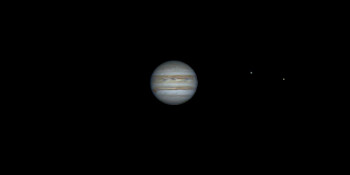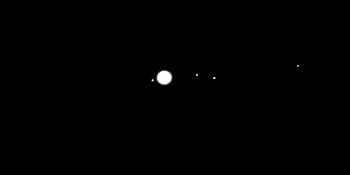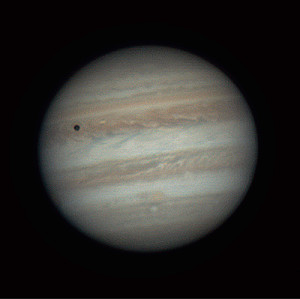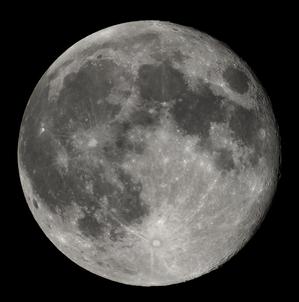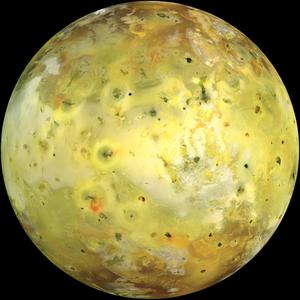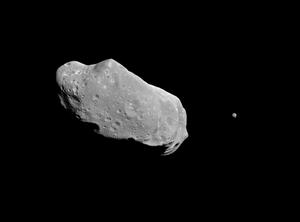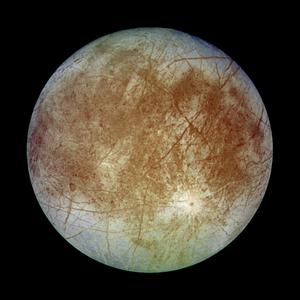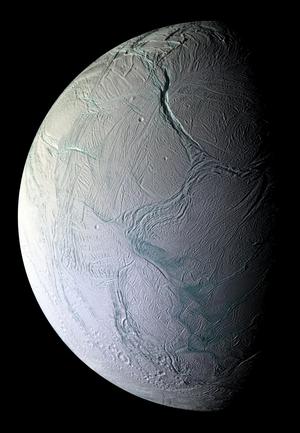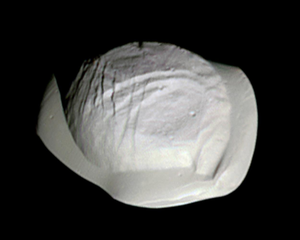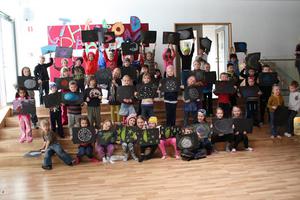Glossarbegriffe: Monde
Description: Monde sind Himmelskörper, die Planeten, Zwergplaneten oder kleinere Objekte wie Asteroiden umkreisen. Die Erde hat einen Mond, der Mond oder Erdmond genannt wird. Außer Merkur und Venus haben alle anderen Planeten des Sonnensystems auch Monde. Der Zwergplanet Pluto hat mehrere Monde, ebenso wie eine kleine Anzahl anderer Zwergplaneten und Asteroiden. Monde sind natürliche Satelliten. Künstliche Satelliten, wie sie für Kommunikations- oder wissenschaftliche Zwecke verwendet werden, sind keine Monde.
Viele Monde entstanden in einer Umlaufbahn um den Planeten, Zwergplaneten oder anderen Körper, den sie umkreisen. Man nimmt an, dass sich der Erdmond in einer Umlaufbahn um die Erde aus Material gebildet hat, das bei einer großen Kollision zwischen der Erde und einem Planetoiden in einer frühen Phase der Entstehung des Sonnensystems ins All herausgeschleudert wurde. Viele andere (meist kleinere) Monde sind Asteroiden, die von der Schwerkraft des Objekts, das sie umkreisen, eingefangen wurden.
Zugehörige Glossarbegriffe:
See this term in other languages
Term and definition status: The original definition of this term in English have been approved by a research astronomer and a teacher The translation of this term and its definition is still awaiting approval
The OAE Multilingual Glossary is a project of the IAU Office of Astronomy for Education (OAE) in collaboration with the IAU Office of Astronomy Outreach (OAO). The terms and definitions were chosen, written and reviewed by a collective effort from the OAE, the OAE Centers and Nodes, the OAE National Astronomy Education Coordinators (NAECs) and other volunteers. You can find a full list of credits here. All glossary terms and their definitions are released under a Creative Commons CC BY-4.0 license and should be credited to "IAU OAE".
Zugehörige Medien
Jupiter's Rotation, by Vishal Sharma, India
Bildnachweis: Vishal Sharma/IAU OAE
License: CC-BY-4.0 Creative Commons Namensnennung 4.0 International (CC BY 4.0) icons
Jupiter Moons Movie2, by Nicolas Hurez, Paul-Antoine Matrangolo, and Carl Pennypacker, United States of America
Bildnachweis: Nicolas Hurez, Paul-Antoine Matrangolo and Carl Pennypacker/IAU OAE
License: CC-BY-4.0 Creative Commons Namensnennung 4.0 International (CC BY 4.0) icons
Jupiter, Io and its shadow, by Ralf Burkart, Germany
Bildnachweis: Ralf Burkart/IAU OAE
License: CC-BY-4.0 Creative Commons Namensnennung 4.0 International (CC BY 4.0) icons
Full moon
Bildnachweis: Luc Viatour credit link
License: CC-BY-SA-3.0 Creative Commons Namensnennung - Weitergabe unter gleichen Bedingungen 3.0 Unported icons
Io
Bildnachweis: NASA/JPL/University of Arizona credit link
License: PD Public Domain icons
Ida und Dactyl
Bildnachweis: NASA/JPL credit link
License: PD Public Domain icons
Europa
Bildnachweis: NASA/JPL/DLR
License: PD Public Domain icons
Titan in natural colours
Bildnachweis: NASA/JPL-Caltech/Space Science Institute credit link
License: PD Public Domain icons
Titan with surface features
Bildnachweis: NASA/JPL/University of Arizona/University of Idaho credit link
License: PD Public Domain icons
Enceladus
Bildnachweis: NASA/JPL/Space Science Institute credit link
License: PD Public Domain icons
Pan
Bildnachweis: NASA/JPL-Caltech/Space Science Institute credit link
License: PD Public Domain icons
Related Activities
Deadly Moons
astroEDU educational activity (links to astroEDU website) Description: Through art and science, children learn about moons of our solar system.License: CC-BY-4.0 Creative Commons Namensnennung 4.0 International (CC BY 4.0) icons
Tags: Art , Creativity , Hands-on , Drawing Age Ranges: 6-8 , 8-10 , 10-12 Education Level: Primary , Secondary Areas of Learning: Fine Art focussed , Social Research Costs: High Cost Duration: 1 hour Group Size: Group Skills: Asking questions , Communicating information